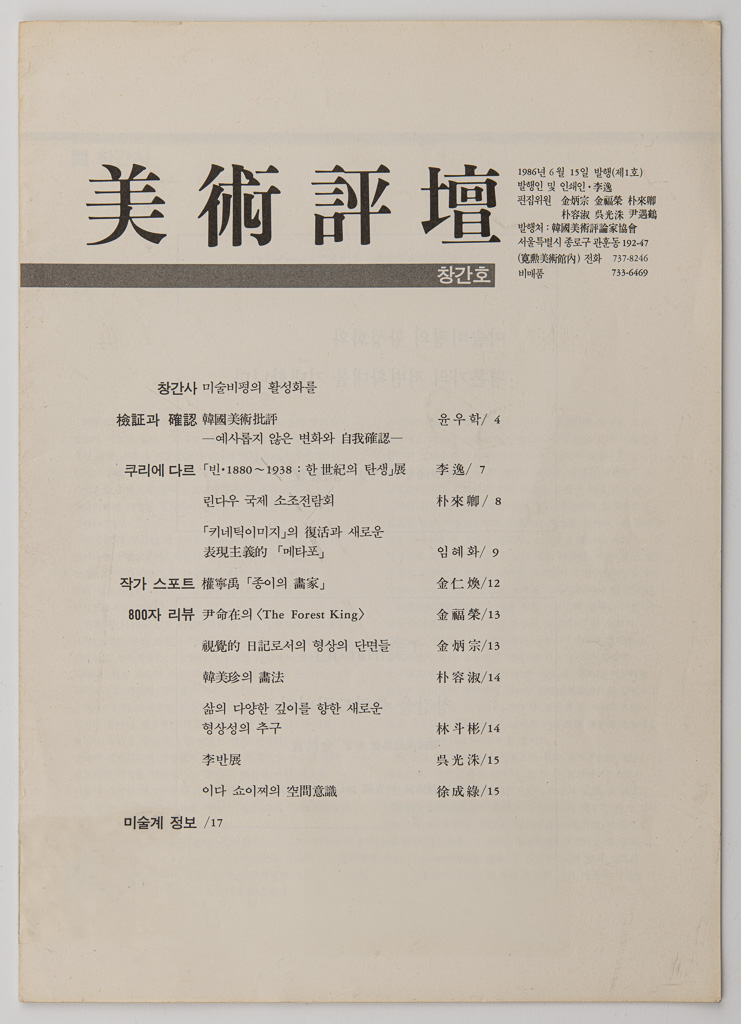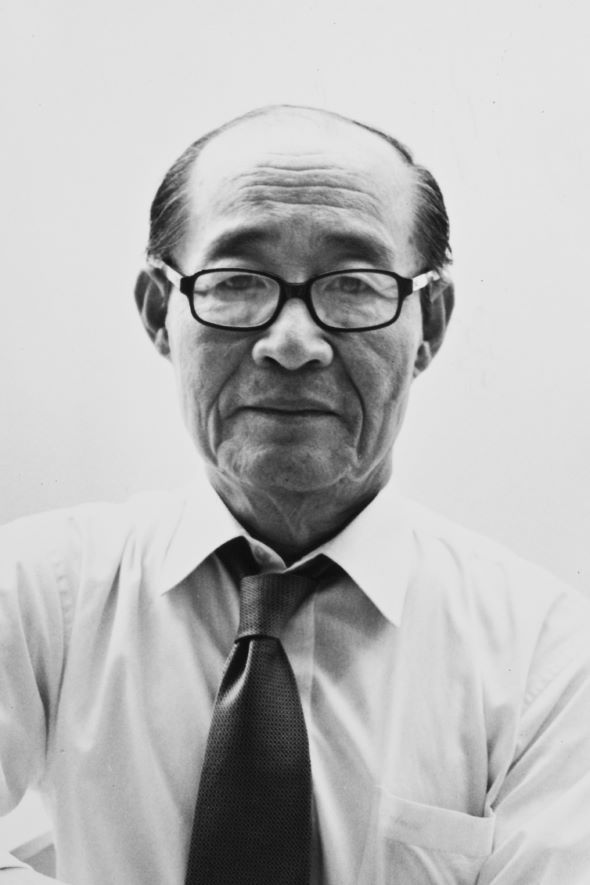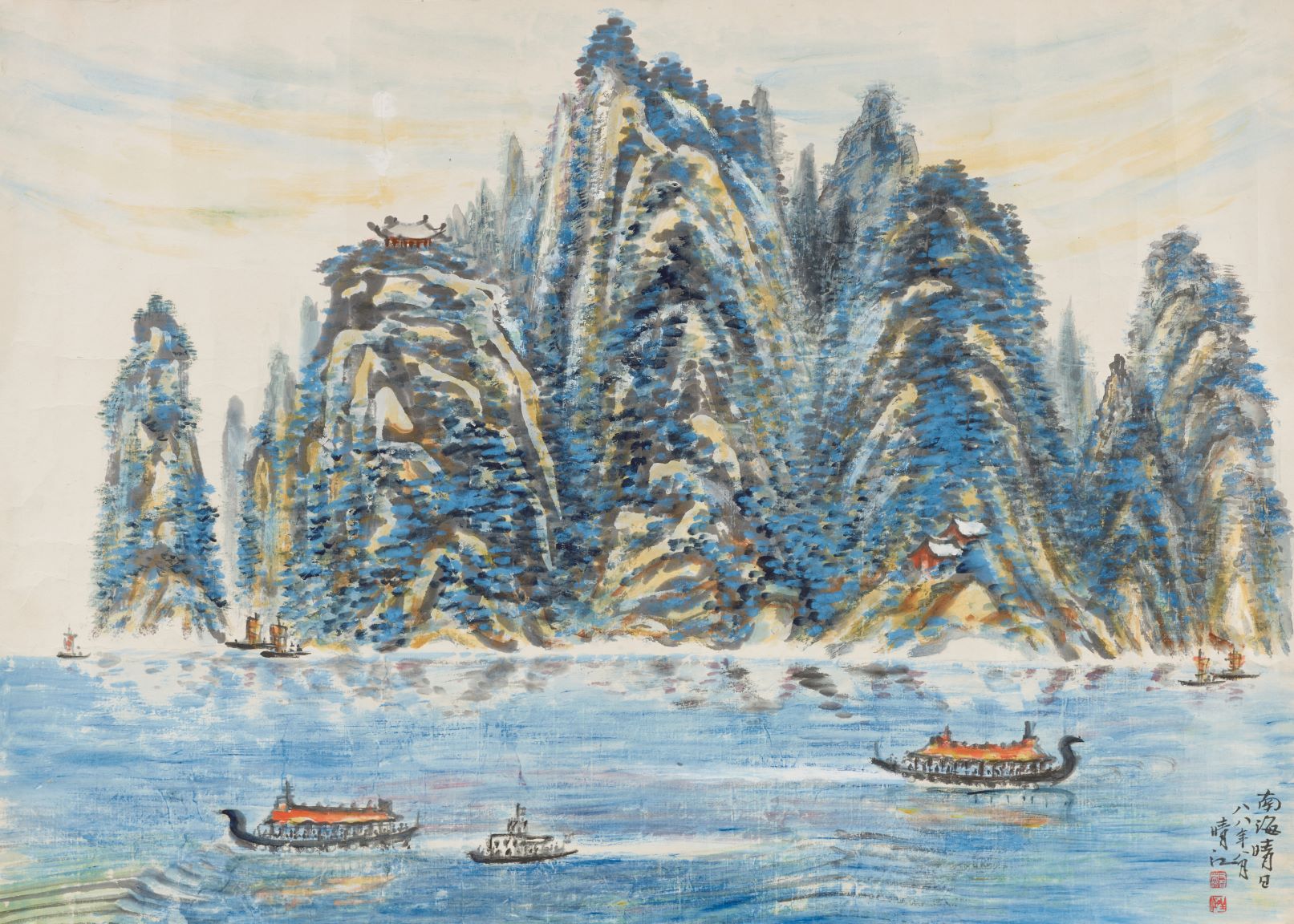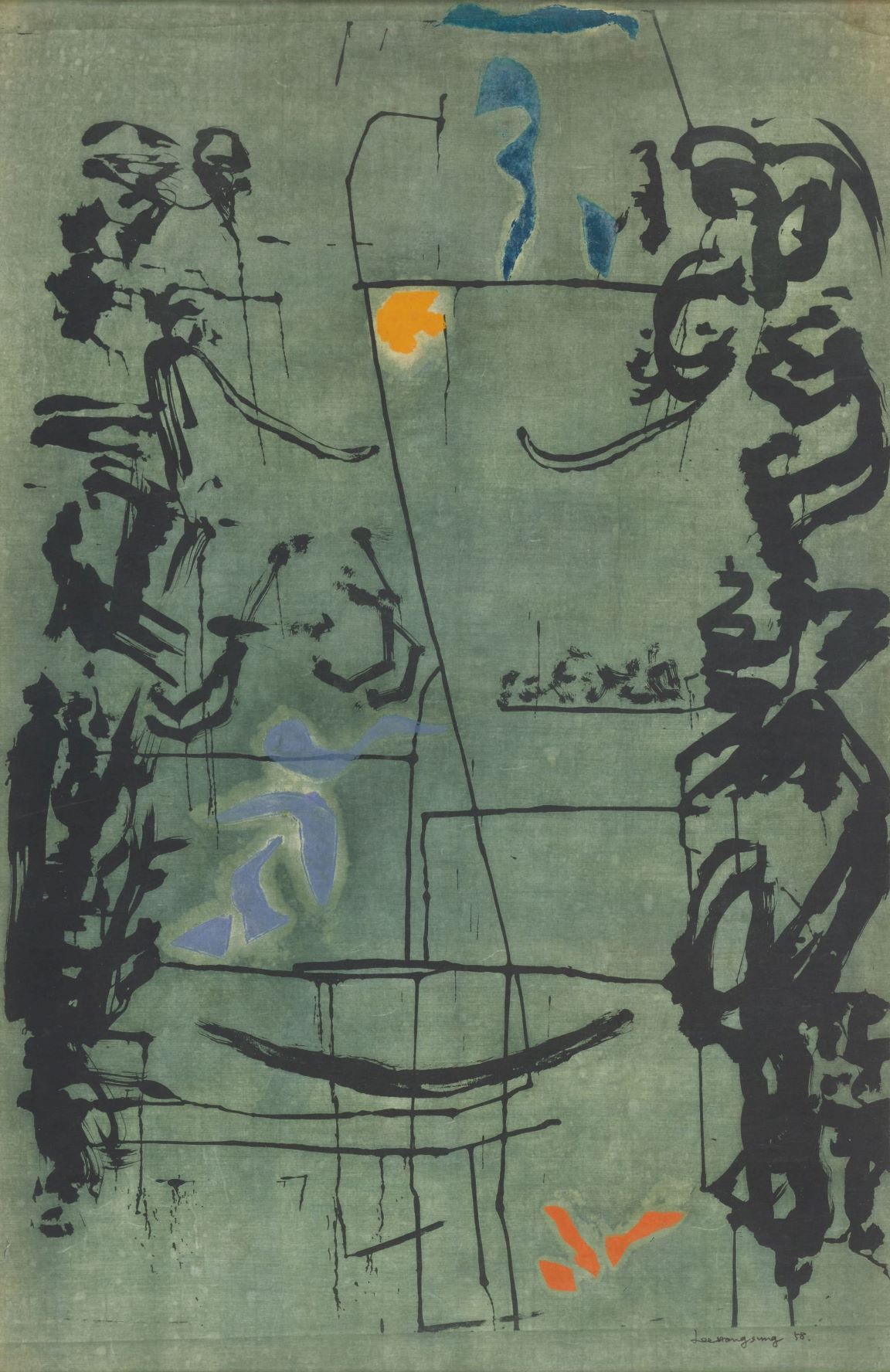
Korean Journal of Art Criticism no.1, June 15 1986, Korean Art Critics Association, MMCA Art Library Collection
Korean Art Critics Association
* Source: Multilingual Glossary of Korean Art by Korea Arts Management Service
Related
-

Lee Kyungsung
Lee Kyungsung (1919-2009, pen name Seoknam) was born in Incheon as the first son of Lee Hak-soon and Jin Bo-bae. He graduated from Changyeong Elementary School (1926-31) and Gyeongseong Commercial School (1934-36). In 1937, he moved to Japan and graduated from the Department of Law at Waseda University in 1941. After his return to Korea, he worked as a clerk at the Gyeongseong Court. Later, he returned to Japan to study art history at Weseda University. After independence, he was appointed as the first director of the Incheon City Museum, a director of Hongik University Museum, Walker Hill Art Center (1981-83), and the MMCA (1981-83, 1986-92). He strived to improve the structure of Korean art museums and also trained professional curators. During his appointment as a professor at Ewha Womans University (1957-60) and Hongik University (1961-81), he also served as a chair of the Korean Art Critics Association and published several important books that contributed to the foundation of a modern Korean art history. He established the Seoknam Art Culture Foundation in 1989 and the Seoknam awards for art and art theory. After his retirement, he focused on his art and held numerous solo exhibitions.
-

Chung Kyu
Chung Kyu (1923-1971) was born in Goseong, Gangwon-do. He graduated from Gyeonggi Public Commercial School in 1941 and moved to Japan to attend the Department of Western Painting at Teikoku Art School. He returned to Korea in 1944 and stayed in Busan during the Korean War, moving to Seoul to be a researcher at the Korean Visual Art Research Institute from 1954 to 1962. He studied prints and ceramics in Rochester, New York, USA on a one-year invitation from the Rockefeller Foundation. After he came back, he expanded his art from painting to prints and ceramics. He was a founding member of the Korea Art Critics Association in 1956, the Korea Prints Association [Hanguk panhwa hyeophoe] in 1958, and the Korean Art Critics Association in 1960. He established the Institute of Korean Traditional Ceramics Craft in 1960. He contributed his prints to the Contemporary Art Exhibit sponsored by Chosun Ilbo and created ceramic murals at Oyang Building and Namsan Liberty Center, leaving an important mark on the development of public art in Korea. He worked as an art lecturer at Ewha Woman’s University from 1955 to 1961, at the department of craft, Hongik University from 1960 to 1963, and as a professor of the Department of Ceramics at Kyung Hee University from 1963 to 1971.
-

Yu Jun-sang
Yu Jun-sang (1932-2018) was a founding member of the Korean Art Critics Association [Hanguk misul pyeongnonga hyeophoe] along with Lee Yil and Oh Kwang-su. He has worked in various fields as a curator, educator, and art museum director. After graduating from the College of Commerce at Seoul National University in 1954, Yu moved to France in 1956 and pursued a Ph.D. in business administration at the University of Paris (Université de Paris) before dropping out. He studied painting at the Académie de la Grande Chaumière and audited the history of Western modern and contemporary art at the Liberal Arts Department of the University of Paris. After returning to Korea, he taught art theory courses at Hongik University, Seorabeol University of Arts, and Ewha Womans University. As an art critic, he served as president of the Korean Art Critics Association from 1972 to 1982. Yu participated in the selection of artists representing Korea for the exhibition of Contemporary Korean Painting held at The National Museum of Modern Art, Tokyo in 1968, and Korean Contemporary Art: 1957–1972 held at the Myeong-dong Gallery in 1973. He was head of the curatorial department at the National Museum of Contemporary Art, Korea (now MMCA) from 1986 to 1992 and as director of the Seoul Museum of Art from 1999 to 2002. He also laid the foundation for Korean art criticism by assuming charge of editing the magazines Hyeondae Misul of Myeong-dong Gallery in 1974 and Sun misul of Sun Gallery from 1979 through 1983. His publications can be divided into those that attempt a conceptual or aesthetic approach and those that discuss the works of other artists. The former include Korean Contemporary Art 12: Stylization of Korean Sentiments (Hanguk Ilbo newspaper company, 1977, 82–108) and “Prospects and Possibilities for Computer Art: A Focus on Patterns of Perception and Artistry” in Beyond Modernism (Yesul jisik, 1989, 298–315). Among the artists that Yu addressed with interest were Rhee Seundja, Kwon Jinkyu, Quac Insik, Moon Shin, Nam Kwan, Kwon Okyon, Kim Whanki, Chang Dookun, Lee Seduk, Han Mook, Moon Hakjin, Park Hangsup, Choi Youngrim, and Kim Sechoong. Yu was particularly interested in the generation of artists who had received art training before Korea’s liberation from Japan as well as those who had lived in France.
Find More
-

Kim Youngki
Kim Youngki (1911-2003, pen name Cheonggang), the son of Kim Kyujin (pen name Haegang), learned calligraphy and painting at an early age, traveled to Beijing, China, and studied under Qi Baishi, the master of modern Chinese painting. He employed various painting styles ranging from bird-and-flower painting and the Four Gentlemen painting in the literati style influenced by his father and Qi Baishi to landscape and flowering plant painting in the polychrome style through the impact of Japanese painting. After Korea’s independence, Kim led the formation of Dangu Art Academy [Dangu misulwon] and sought Eastern painting and departed from Japanese painting by producing landscape paintings in the style of light colors. During the Korean War, he stayed in Gyeongju and studied the history and culture of the Silla Kingdom (CE676–935) while creating abstract paintings on the theme of Silla historical artifacts to search for the modernization of Eastern painting. In 1957, he founded the Paek Yang Painting Association along with Kim Kichang, Park Rehyun, Kim Junghyun, and others. He also contributed to overseas exchanges of Korean art by holding traveling exhibitions in Taiwan, Hong Kong, and Japan. In the 1960s, he developed “literalized art,” a form of abstracted calligraphy, under the influence of Art Informel. In the 1980s, he tried a new change with “Navy Blue Landscape,” which gave expression to a scenic spot in Korea, mainly using navy blue. Kim Youngki actively engaged in studying art theory and art criticism and published several books, including Joseon misulsa (History of Korean Art, 1947), Silla munhwawa Gyeongju gojeok (Silla Culture and Gyeongju Historical Remains, 1953), Dongyang misulsa (History of Eastern Art, 1971), and Dongyang misullon (Theory of Eastern Art, 1980). He was the first to advocate for the use of the term “Korean painting” instead of “Eastern painting.” In 1955, he held his solo exhibition entitled Contemporary Korean Paintings by Cheonggang Kim Youngki.
-

Lee Hangsung
Lee Hangsung (1919-1997) was a Western-style painter and printmaker who pioneered Korean contemporary printmaking and a leading publisher who promoted the publication and dissemination of art books. He learned painting from Kwon Jungrok, a Western-style painter active in Daejeon, and worked as a stage artist at Dongyang Theatre in Seoul. In 1945, he established a publishing company Munhwa Gyoyuksa and published art textbooks for elementary, middle, and high schools and art books such as Seoyang misulsa (History of Western art) and Segye misul jeonjip (Collection of world art). In 1956, he established another publishing company Sinmisulsa and published Sin Misul (New art), the first art magazine in Korea, thus exerting influence upon the formation of the culture of art criticism. Lee Hangsung led the founding of the Korea Prints Association [Hanguk panhwa hyeophoe] along with Yoo Kangyul, Chung Kyu, Choi Youngrim, and others. In 1958, Lee held the first solo exhibition of lithographs by a Korean artist. Winning an honorable mention for the lithograph Tender Heart of the Buddha at the fifth International Biennial of Contemporary Color Lithography held in 1959 at Cincinnati Art Museum in the U.S., he secured his place in the Korean art scene as a printmaker. Later, he produced print works using Joseon-era wooden blocks that were used for printing old books, letterheads, book covers, and those for imprinting patterns on rice cakes. In his later years, he continued to create works that revealed his Eastern spirituality by pictorializing Chinese characters, such as “念” (yeom, meaning idea), “情” (jeong, meaning affection), “思” (sa, meaning thought), and “心” (sim, meaning mind). Lee contributed to the development of art education by serving as president of the Korean Art Education Association [Daehan misul gyoyuk gyeophoe] and chairman of the Korean Committee of the International Society for Education [Gukje misul gyoyuk hyeophoe hanguk wiwonhoe].
-

Kim Byungki
Kim Byungki (1916-2022) was one of the first-generation Korean abstract artists. He was born in Pyongyang as the second son of Kim Chanyoung, who graduated from the Tokyo School of Fine Arts. He associated with Kim Whanki at the Avant-garde Western Art Institute in Tokyo in 1933, and in 1939 he studied at the Art Department of Bunka School in Tokyo together with Lee Jungseop and Mun Haksu. After his return to Korea, he served as a secretary of the Korean Art Alliance (Joseon misul dongmaeng) in Pyongyang and then moved to Seoul in 1948. Kim Byungki established the 1950 Art Association (Osimnyeon misul hyeophoe) under the Korean Culture Research Institute in 1949 and, as its secretary-general, tried to unite established artists, but due to the outbreak of the Korean War, it never held exhibitions. During the war, he worked as a deputy director of the military painter group. In 1954, he participated in the Special Exhibition on Modern Korean Painting at the National Museum. After reading an article in The Times related to Pablo Picasso’s painting Massacre in Korea (1951), Kim published “Farewell to Picasso” in the first issue of Munhak yesul (Literature and Art) in 1954. He also devoted himself to art practice, art education, and art theory by teaching at Seoul National University, Seoul Arts High School, and the Institute of Contemporary Art and participating in the first Contemporary Art Exhibit hosted by the Chosun Ilbo newspaper company. He was commissioner of the Paris Biennale in 1961. In 1965, as the board president of Korean Fine Arts Association, he worked as commissioner and judge of the São Paulo Biennale. At the time, he moved to the U.S. and settled in Saratoga, New York, where he absorbed himself in creating artworks for twenty years until he returned home. In 1986, he held a solo exhibition at the Gana Gallery in Seoul. In 1989 he returned to the U.S. and Kim returned to South Korea permanently in 2014 for the MMCA’s exhibition Kim Byungki: The Distribution of Sensible. In 2022, he passed away at the age of 106. Among his notable works are Street Trees (1947), Still Life by Window (1954), Mountain (1967), Forest and Still Life (1987), and Winter Scene (2000).






